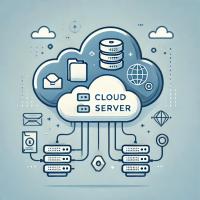Best Practices of Infrastructure as Code, IaC - Tools and Strategies

Introduction to Infrastructure as Code (IaC)
Infrastructure as Code (IaC) revolutionizes DevOps by automating infrastructure management through code rather than manual processes, significantly enhancing deployment efficiency, reducing errors, and ensuring consistency across environments.
Benefits of Infrastructure as Code
Adopting IaC delivers several major benefits:
- Automated Management: Streamlines infrastructure provisioning and management.
- Consistency and Standardization: Eliminates discrepancies across deployments.
- Speed and Simplicity: Accelerates project timelines through faster deployments.
- Documentation: Provides clear, actionable documentation of infrastructure setups.
Top Tools for Infrastructure as Code
The choice of tools is pivotal in implementing effective IaC solutions. Here are some of the leading tools in the industry:
Terraform
Terraform is favored for its ability to manage a broad array of service providers using a declarative configuration language.
Key Features:
- Provider Agnostic: Works with multiple service providers.
- Immutability: Automatically updates resources during deployment.
- Management of External Resources: Handles specific service components adeptly.
Ansible
Ansible stands out for its simplicity and agentless architecture, facilitating quick setups and efficient management.
Key Features:
- Simplicity and Ease of Use: Easy to set up and manage.
- Agentless: No installations required on client servers.
- Extensive Community: Supported by a large community.
Chef
Chef is ideal for environments that blend legacy and modern cloud infrastructures, employing a Ruby-based DSL for configurations.
Key Features:
- Mature Solution: Trusted in the industry for complex needs.
- Flexibility: Highly customizable for specific enterprise requirements.
- Strong Community and Support: Well-supported by comprehensive resources and community contributions.
Puppet
Puppet is designed for scalability and cross-platform compatibility, suitable for managing large and diverse systems.
Key Features:
- Visual Tools: Provides GUI tools for resource management visualization.
- Scalable: Manages large-scale infrastructures efficiently.
- Cross-Platform: Operates across various platforms effectively.
Cloud Platforms and IaC
Incorporating cloud platforms like AWS, Azure, and Google Cloud into your IaC strategies enhances flexibility and scalability.
AWS CloudFormation
AWS CloudFormation allows you to model your entire AWS infrastructure in a text file. This service enables you to provision and manage AWS resources predictably and repeatedly.
Azure Resource Manager
Azure Resource Manager (ARM) is the deployment and management service for Azure. It provides a management layer that enables you to create, update, and delete resources in your Azure account.
Google Cloud Deployment Manager
Google Cloud Deployment Manager allows you to specify all the resources needed for your application in a declarative format using yaml. It automates the provisioning of Google Cloud resources, making it easier to manage complex deployments.
Best Practices for Implementing Infrastructure as Code
Implementing IaC effectively requires adherence to certain best practices:
Centralize and Version Control Your Code
- Maintain a Single Source of Truth: Centralize all IaC configurations in one repository.
- Use Version Control: Utilize tools like Git to track changes and enable rollback capabilities.
Immutable Infrastructure
- Avoid Manual Changes: Never alter configurations manually in live environments.
- Rebuild, Don’t Repair: Favor rebuilding entire environments over patching existing ones to maintain consistency.
Continuous Integration and Continuous Deployment (CI/CD)
- Automate Testing and Deployment: Integrate automated testing in the deployment pipeline.
- Continuous Monitoring: Keep a regular check on the performance and security of your infrastructure.
Documentation and Standards
- Document Everything: Ensure all code is well-documented for future reference and scalability.
- Adhere to Coding Standards: Apply consistent coding standards to infrastructure code to enhance maintainability and readability.
Conclusion
Selecting the right IaC tools and following established best practices is essential for optimizing infrastructure management. Whether leveraging Terraform's flexibility, Ansible's simplicity, Chef's customization capabilities, or Puppet's scalability, proper implementation of IaC can greatly enhance the operational efficiency and reliability of IT environments.







